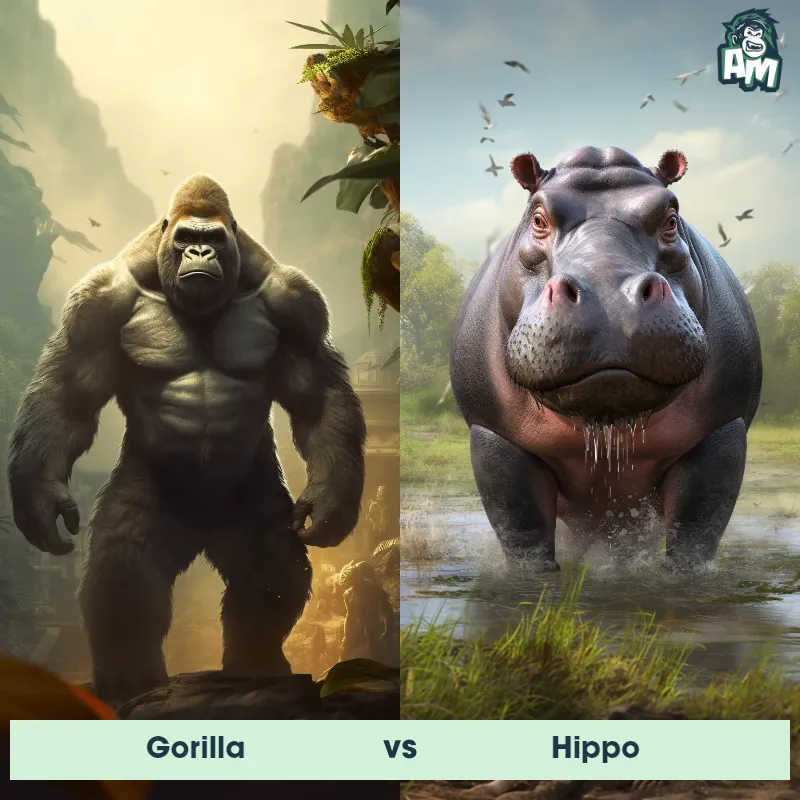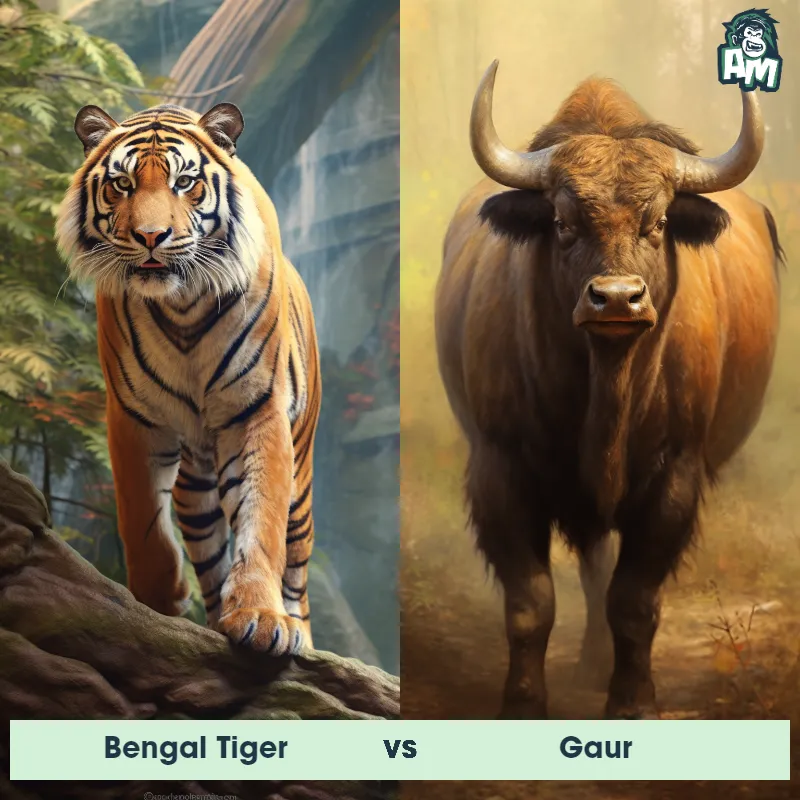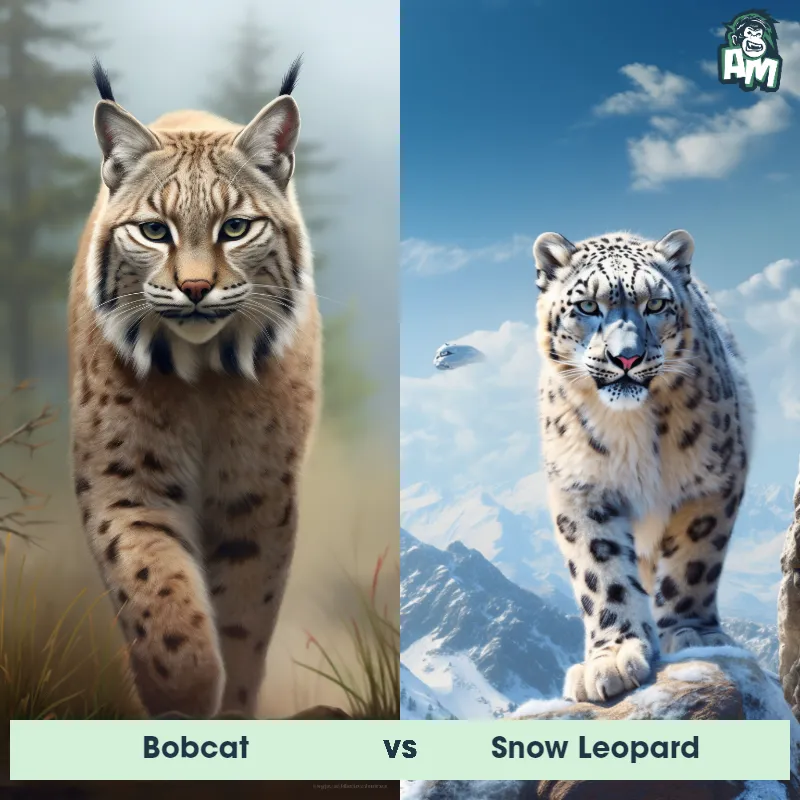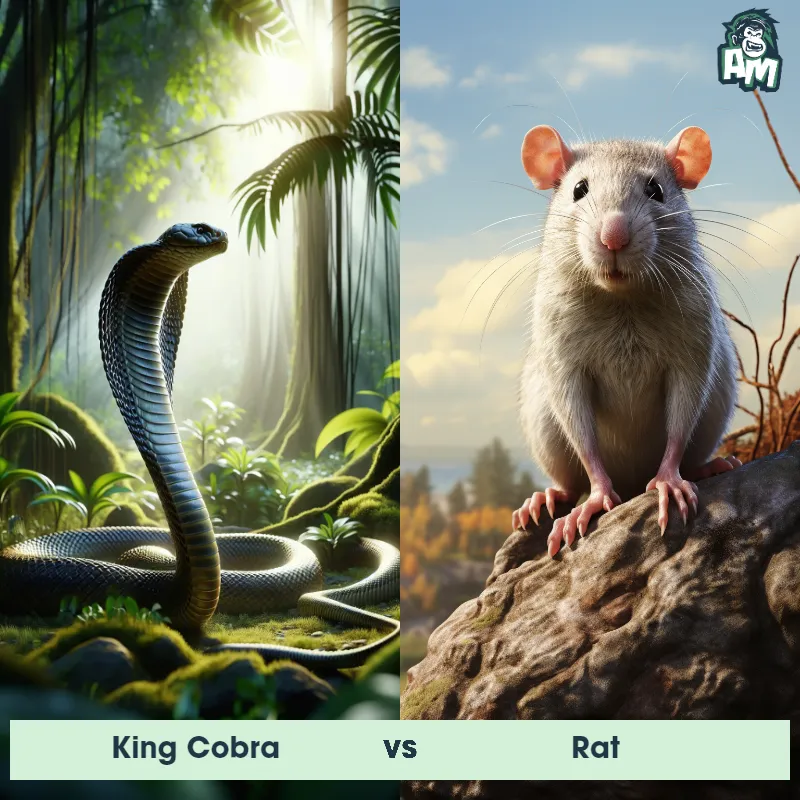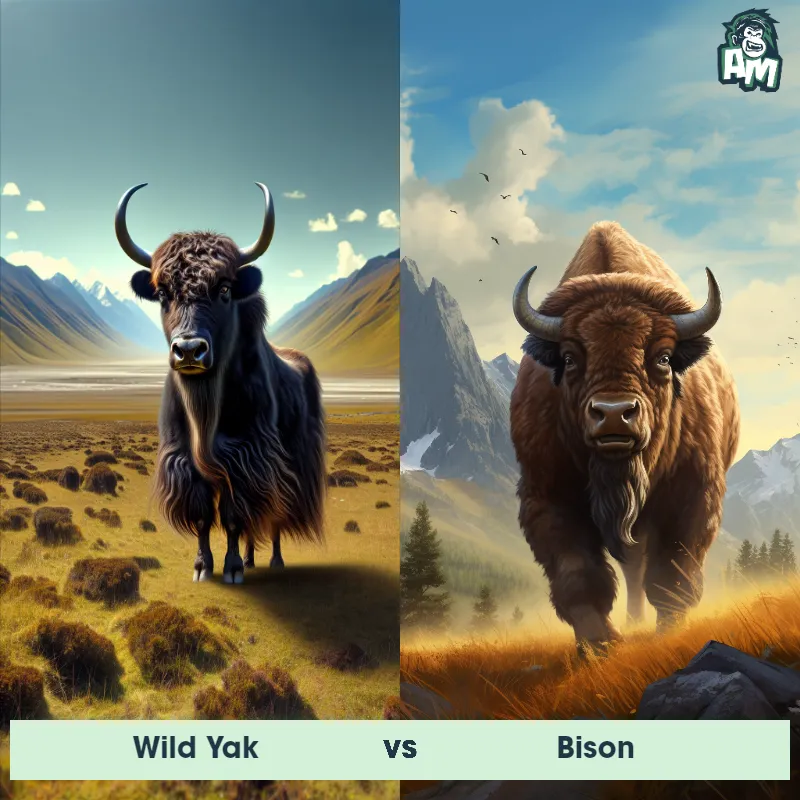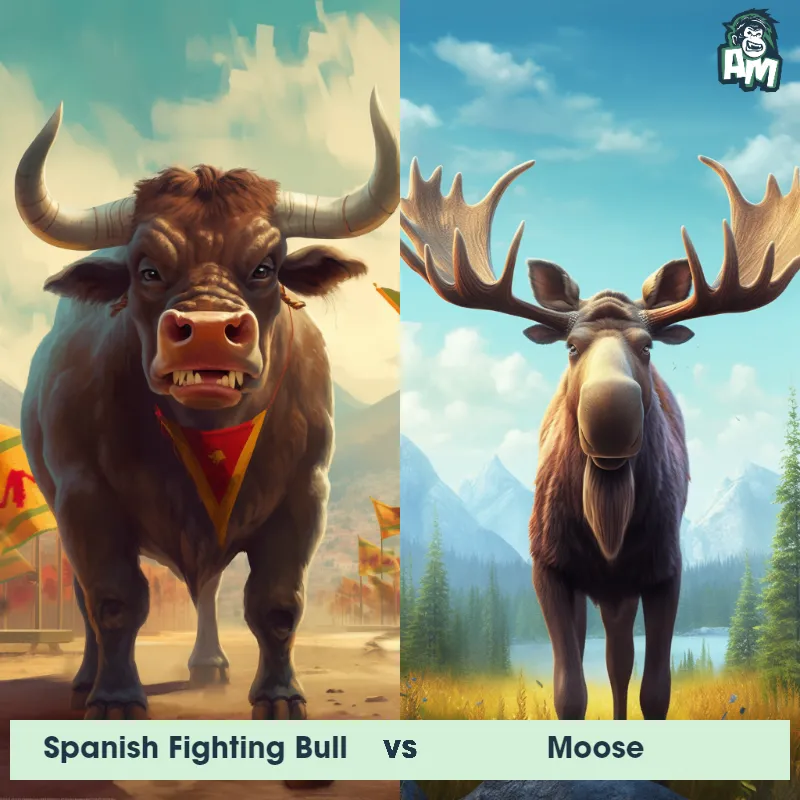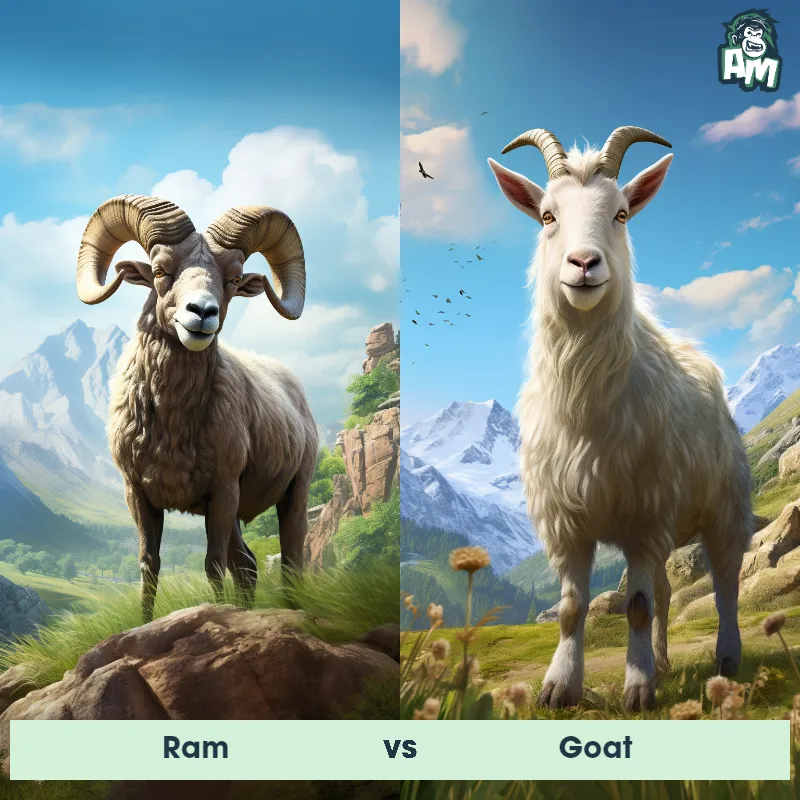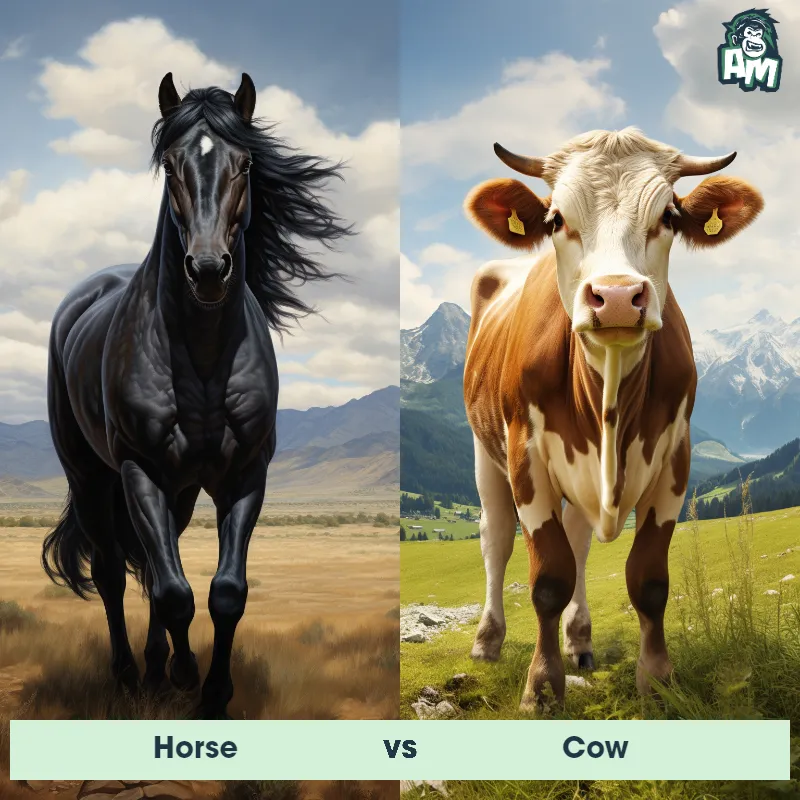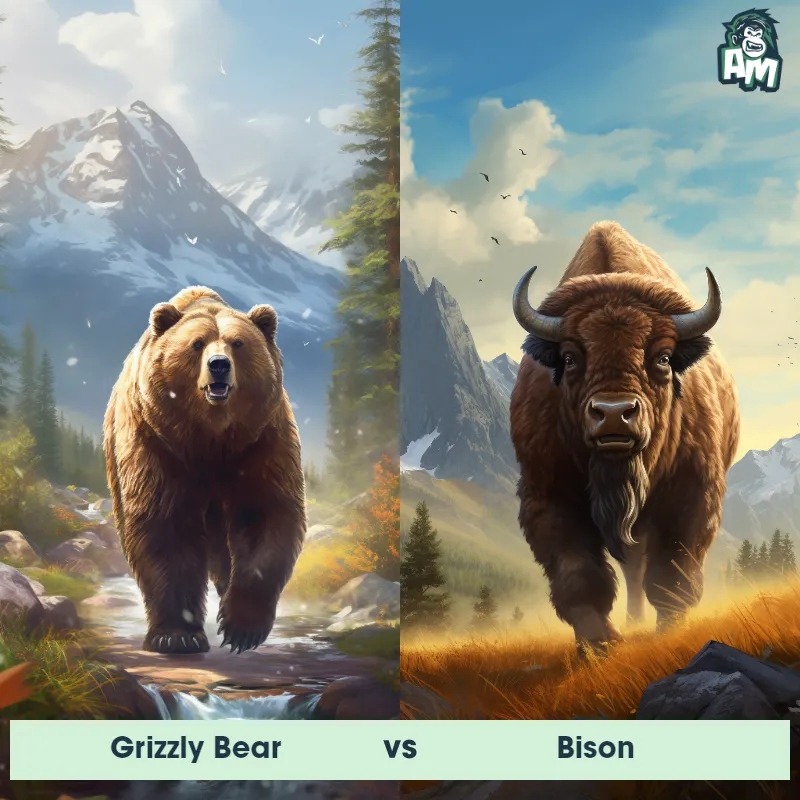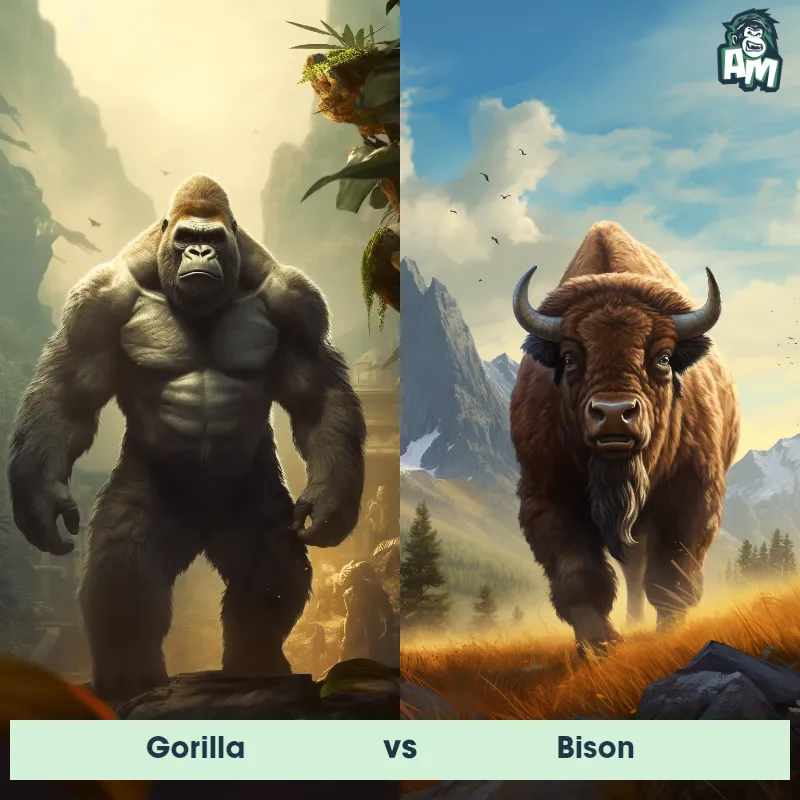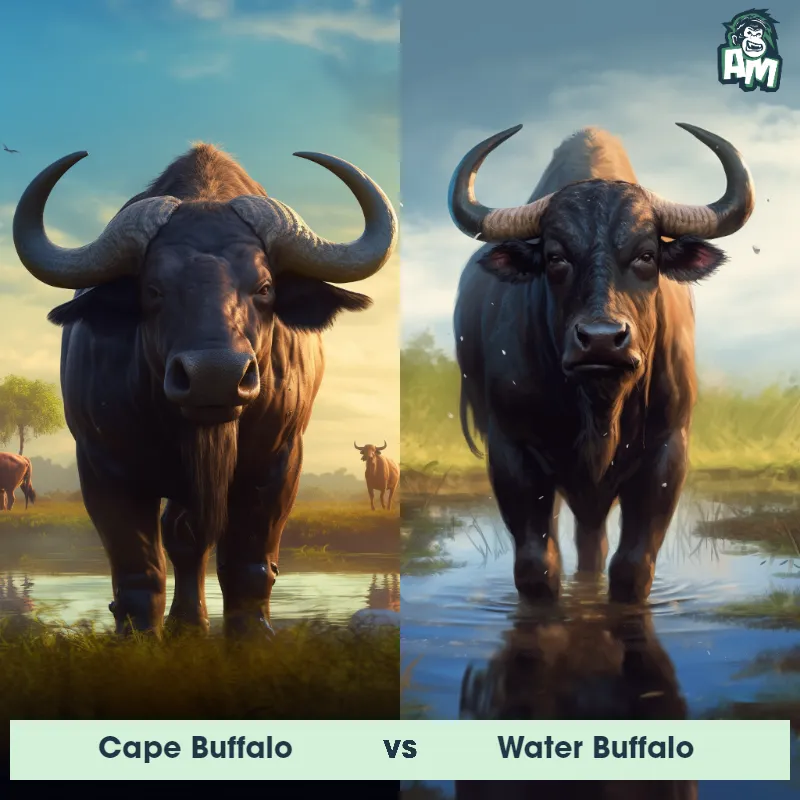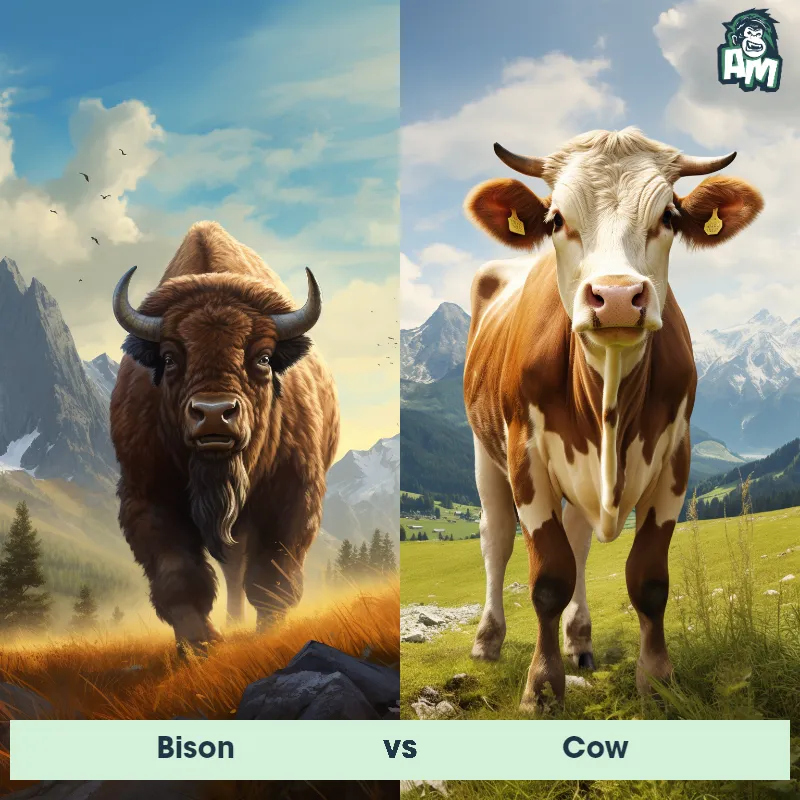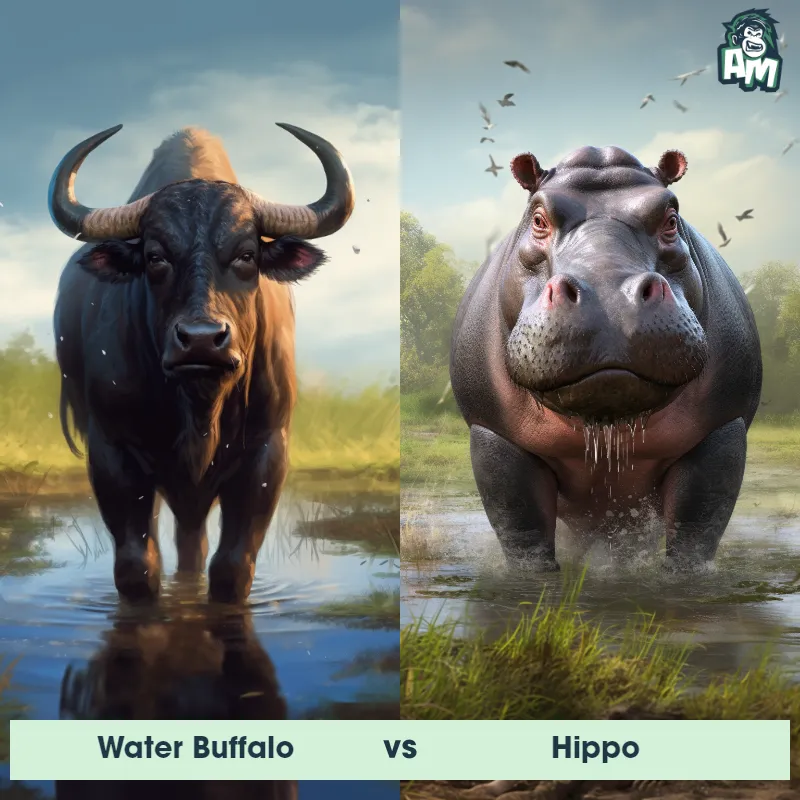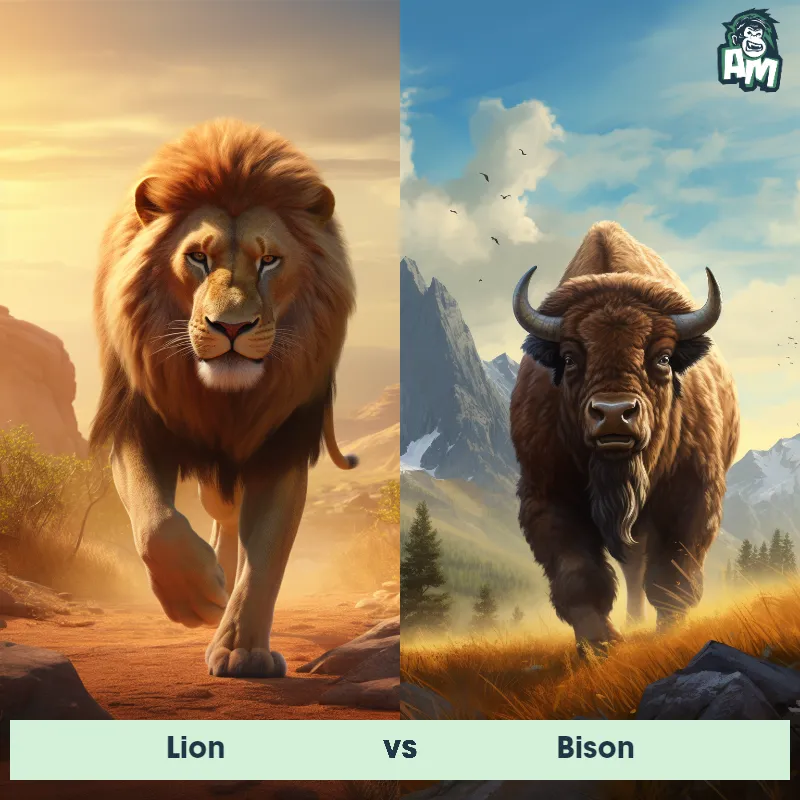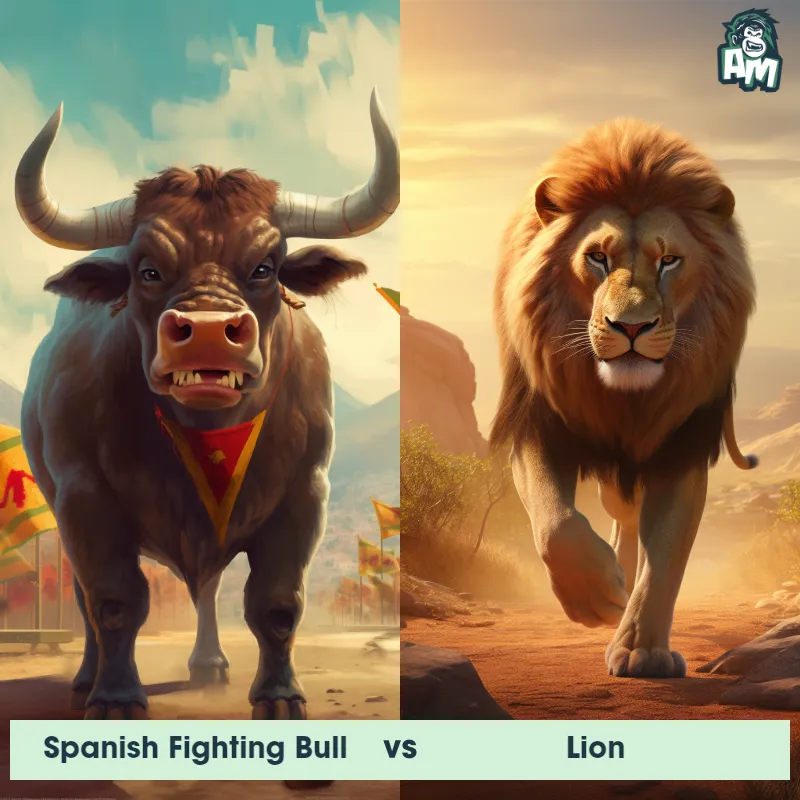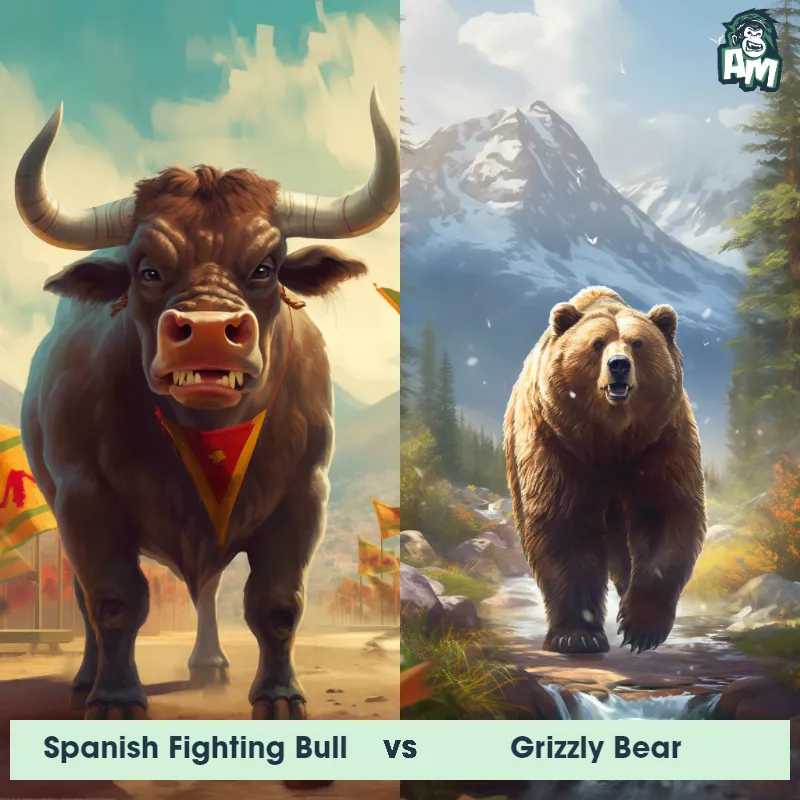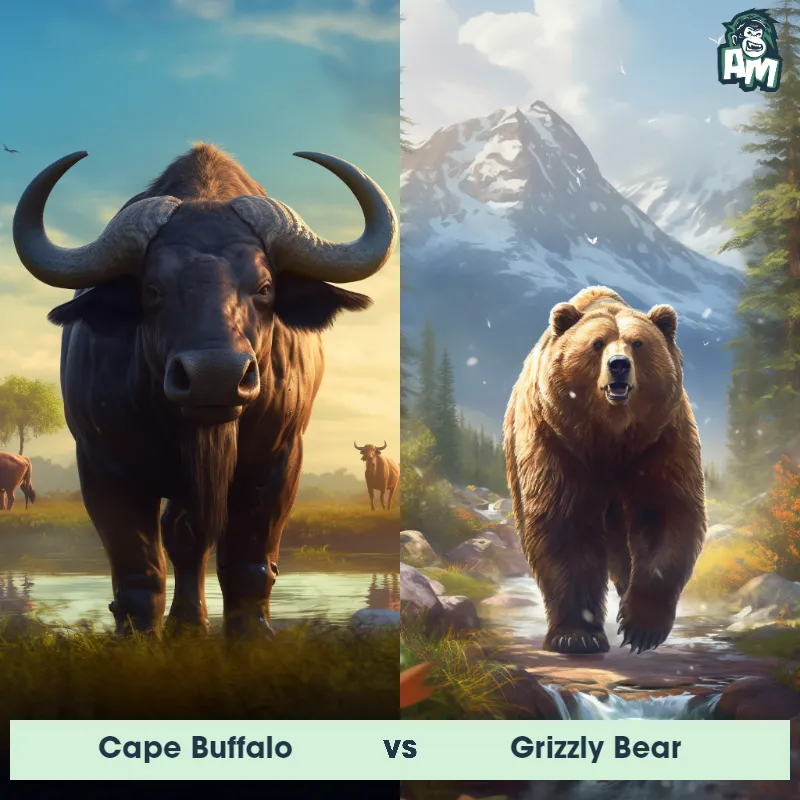Wild Water Buffalo vs BisonSee Who Wins

Welcome to today's showdown between two powerful and formidable opponents, the Wild Water Buffalo and the Bison. These two giants of the animal kingdom are about to go head to head in a battle of strength and dominance. Let's see who will reign supreme in this epic matchup.
Contender 1: Wild Water Buffalo
The Wild Water Buffalo, also known as Bubalus arnee, is a large bovine species native to the Indian subcontinent and Southeast Asia. These majestic creatures can grow up to 3 meters in length and stand up to 1.9 meters tall at the shoulder. Known for their impressive size and muscular build, Wild Water Buffalos have a dark brown or black coat that is thick and coarse, providing protection against the elements. They possess crescent-shaped horns that can reach up to 2 meters in length, which distinguishes them from other buffalo species. These herbivores inhabit wetlands, marshes, and grasslands in herds led by a dominant male.
Fun Fact: Did you know that the Wild Water Buffalo is considered the largest living bovine species?
Contender 2: Bison
The bison, also known as the American buffalo, is a massive, hump-shouldered beast known for its iconic place in the history and folklore of the American West. They are covered in a shaggy, dark brown winter coat, and have a lighter-weight, lighter brown summer coat. With their massive size, adult males can weigh up to 2,000 pounds, and both males and females have short, curved horns, which they use in fighting for status within the herd and for defense.
Fun Fact: Despite their massive size and seemingly lumbering movements, bison are remarkably agile and quick, capable of running up to 35 miles per hour and jumping high fences.
Matchup Stats
| Wild Water Buffalo | Bison | |
|---|---|---|
| Size | Up to 1.9 meters (6.2 feet) tall at the shoulder; up to 3 meters (9.8 feet) in length | 5-6.5 feet tall at the shoulder (1.5-2 meters) |
| Weight | Up to 1,200 kilograms (2,600 pounds) | Up to 2,000 pounds (907 kilograms) |
| Speed | 30mph (48km/h) | 37mph (60km/h) |
| Key Strength | Size and muscular build | Powerful size, speed, and horns |
| Biggest Weakness | None specified | Limited agility due to size |
Current Votes
Wild Water Buffalo vs Bison
See Who Wins
View More Matches
Looking For More?
Similar Matches
Scientific Stats
| Wild Water Buffalo | Bison | |
|---|---|---|
| Scientific Name | Bubalus arnee | Bison bison |
| Family | Bovidae | Bovidae |
| Habitat | Wetlands, marshes, grasslands | Grasslands, prairies, and forests |
| Geography | Indian subcontinent, Southeast Asia | North America |
| Diet | Herbivorous | Herbivore, primarily grasses and sedges |
| Lifespan | 10 years - 25 years | 12 years - 20 years |
Key Differences between Wild Water Buffalo and Bison
- Habitat: Wild water buffalo are typically found in wetlands and swamps in Asia, while bison generally inhabit grasslands and prairies in North America.
- Size: Wild water buffalo are larger and bulkier than bison, with males weighing up to 2,600 pounds compared to the bison's average weight of 2,000 pounds.
- Tail: The tail of the wild water buffalo is longer and ends in a tassel-like tuft of hair, while the bison's tail is shorter with a tuft of hair at the tip.
- Horns: Wild water buffalo have larger and more curved horns compared to the shorter and straighter horns of the bison.
- Coloration: Wild water buffalo have dark brown to black fur with lighter markings on their face and legs, while bison have a more uniform dark brown or reddish-brown color.
- Hump: Bison have a prominent hump on their shoulders, whereas wild water buffalo do not have a visible hump.







